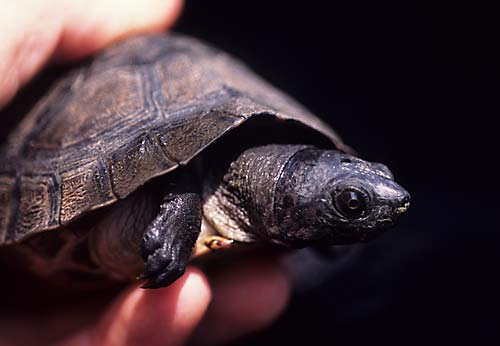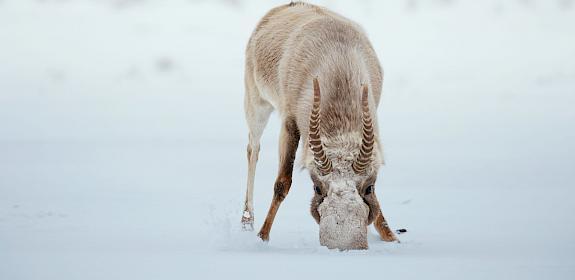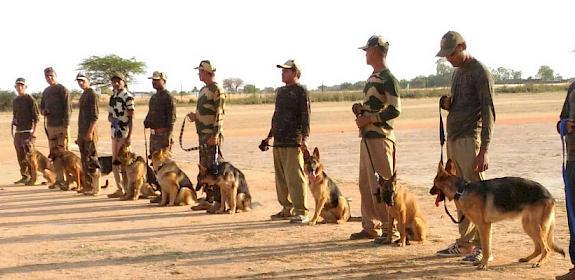Building wildlife law enforcement capacity to combat illegal wildlife trade in South-East Asia
Kuala Lumpur, Malaysia, 17th January 2011—Law enforcers from Brunei Darussalam, Cambodia, Indonesia, Lao PDR, Malaysia, Myanmar, Philippines, Singapore, Thailand and Viet Nam are being trained this week on how to identify threatened reptile species and familiarizing themselves with international wildlife protection policies that will enable them to combat the multimillion dollar illegal wildlife trade in the ASEAN region.

South-East Asia has long been a hotspot in the multi-billion dollar global trade of wildlife but many wild species, including timber, birds, reptiles and mammals are illegally traded in the region.
According to statistics compiled by the ASEAN Wildlife Enforcement Network (ASEAN-WEN), more than 16.9 tonnes of wildlife products were seized in around 200 law enforcement actions across South-East Asia between January and September 2010.
The ASEAN-WEN also estimates that 13,000 tonnes of turtles are illegally shipped to China every year from ASEAN countries.
Experts from ASEAN-WEN and TRAFFIC-Southeast Asia will serve as trainers during the four-day “Training of Trainers” workshop where a number of illegal trade case studies will be presented.
“If left unchecked, currents trends in the illegal wildlife trade will result in massive and irrevocable biodiversity loss. The Training of Trainer workshop presents a unique opportunity to reduce this trend and to safeguard the region’s precious plant and animal resources for generations to come” said Mr. Rodrigo U. Fuentes, Executive Director of the ASEAN Centre for Biodiversity (ACB).
Mr Manop Lauprasert, Senior Officer of the ASEAN-WEN Program Coordination Unit added “the criminals involved in the illegal wildlife trade are well organized and financed. It’s only by working together and pooling our skills, knowledge and resources across the region can we hope to combat wildlife trafficking effectively.”
The current course aims to equip wildlife law enforcers with skills in identifying threatened reptile species that are commonly traded, familiarize them with international regulations governing wildlife trade, such as those under CITES (the Convention on International Trade in Endangered Species of Wild Fauna and Flora), and upgrade participants’ skills in conducting their own training courses on wildlife regulation.
Regional Director of TRAFFIC Southeast Asia, Dr William Schaedla said, “We really are starting with the basics. Most law enforcement personnel never get any training in areas related to wildlife crime. With this course, we’re imparting necessary skills to the right people.”
It is the second in a series of training workshops that seek to involve and enhance the capabilities of ASEAN and neighbouring countries in the understanding and application of taxonomic knowledge as part of a project on “Taxonomic Capacity Building and Governance for Conservation and Sustainable Use of Biodiversity” funded by the Japan-ASEAN Integration Fund.
The project aims to promote the science of taxonomy which is increasingly considered a fundamental tool required by the global community to implement the Millennium Development Goals and the development targets set by the World Summit for Sustainable Development.
The current training course takes place from 17th-21st January at the Novotel Hotel in Kuala Lumpur, Malaysia, and will be conducted by the ASEAN Centre for Biodiversity (ACB) and TRAFFIC Southeast Asia with support from Japan’s Ministry of Environment, and the ASEAN Wildlife Enforcement Network (ASEAN-WEN).
Notes:
• The ASEAN Centre for Biodiversity (ACB) is an intergovernmental regional organization that facilitates cooperation and coordination among the 10 ASEAN Member States (Brunei Darussalam, Cambodia, Indonesia, Lao PDR, Malaysia, Myanmar, the Philippines, Singapore, Thailand, and Viet Nam) and with relevant national governments, regional, and international organizations on the conservation and sustainable use of biological diversity, and the fair and equitable sharing of benefits arising from the use of such natural treasures. ACB facilitates discussion and resolution of cross-country biodiversity conservation issues and envisions capacity development of the ASEAN Member States for policy development and coordination through education on key biodiversity-related multilateral environment agreements, as well as increased knowledge and skills to assess regional/national situations and develop appropriate response mechanisms. ACB also aims to enhance competence of Protected Area managers of the ASEAN Member States through the conduct of capacity building series workshops and conferences with partner institutions.
• The ASEAN Wildlife Enforcement Network (ASEAN-WEN) aims to address illegal exploitation and trade in CITES-listed species within the ASEAN region. It is an integrated network among law enforcement agencies in the 10 ASEAN Member States (Brunei Darussalam, Cambodia, Indonesia, Lao PDR, Malaysia, Myanmar, the Philippines, Singapore, Thailand, and Viet Nam), involving CITES authorities, customs, police, prosecutors, specialized governmental wildlife-law enforcement organizations and other relevant national law enforcement agencies. This ten member network also aims at facilitating cross border collaboration to fight against illegal wildlife trade in the region. For more information, visit www.asean-wen.org
• TRAFFIC works to support government agencies in law enforcement networking across Asia and globally to combat illegal wildlife trade. Technical assistance across the enforcement continuum, including facilitation of inter-governmental dialogues, engaging the judicial sector, and working with WWF to improve linkages from national level agencies to field-based rangers, is provided on demand to member countries of the ASEAN and South Asia Wildlife Enforcement networks, as well as to China and its immediate neighbours.



